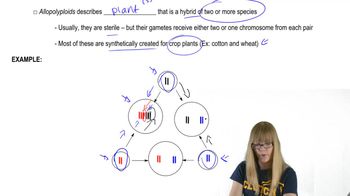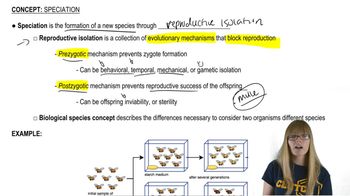Here are the essential concepts you must grasp in order to answer the question correctly.
Allopolyploidy
Allopolyploidy is a form of polyploidy that occurs when two different species hybridize, resulting in a new species with multiple sets of chromosomes from both parent species. In the case of the new plant species described, the combination of the diploid chromosome sets from both parent species leads to a total of 36 chromosomes, illustrating how genetic material from different species can combine to create viable offspring.
Recommended video:
Hybridization
Hybridization is the process where two distinct species interbreed to produce hybrid offspring. This can occur naturally or through human intervention. In the context of the question, hybridization between the two diploid species results in a hybrid that possesses genetic material from both parents, which is crucial for the subsequent formation of the allopolyploid species.
Recommended video:
Speciation
Speciation is the evolutionary process by which populations evolve to become distinct species. The development of an allopolyploid species through hybridization exemplifies a specific pattern of speciation known as sympatric speciation, where new species arise from a common ancestor while inhabiting the same geographic area, often facilitated by genetic changes such as polyploidy.
Recommended video:
 Verified step by step guidance
Verified step by step guidance Verified video answer for a similar problem:
Verified video answer for a similar problem:

